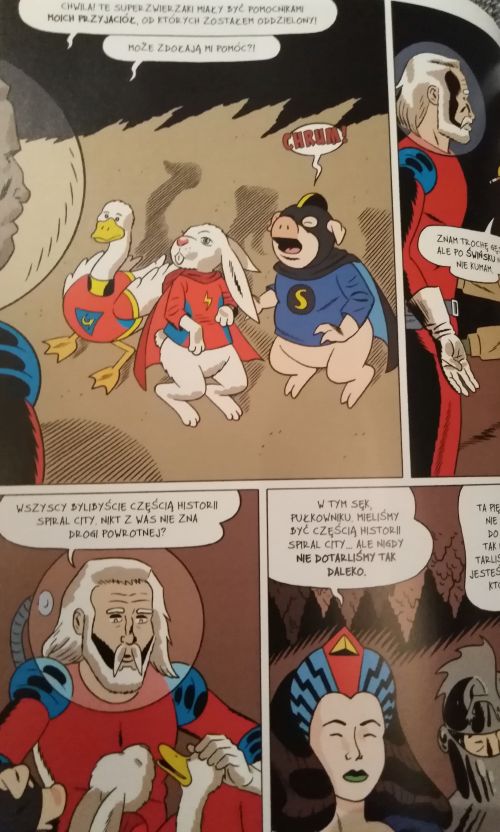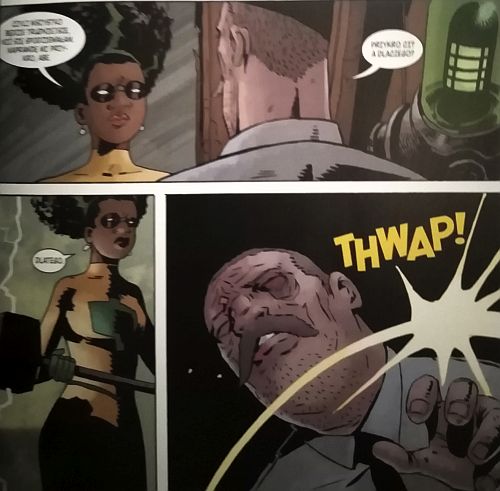Previous editions of the Black Hammer were well thought out and planned. Everything indicated that Jeff Lemire is in control of the script and devotes exactly as much space to its parts as needed to not slow down the action excessively, and at the same time allow for deepening the character’s characteristics. However, this time something went wrong.
How to pour water
The era of doom. Part 2 opens with two chapters focusing on Colonel Weird. Jeff Lemire filled them with more references to the American comic book industry. We also find some not-so-subtle meta-comments about the constant testing of ideas and the endless recycling of plots and characters. Unfortunately, these reflections are rather banal and pretentious. It is also ironic that the author himself falls into the trap of repeating solutions and motives later in his script.
As the action moves back to Spiral City, it turns out that the protagonists have been separated, have lost their memories, and the world they are in is not the same world they wanted to return to. Instead of the exciting finale, we get dozens of pages of re-introducing characters we already know and who we know are actually someone else. Only the last two chapters bring a reasonably sensible climax and ending to the story, although even in this case it was not without deus ex machina.
Boring but nice
Aesthetically, Volume 4 of The Blackhammer is just more of the same. When it comes to drawings, there is nothing to complain about. Although I did not like the boards by guest artist Rich Tomasso, the proven duo of Ormston and Stewart is responsible for most of the comic. The release, which does not differ from the previous albums, looks similarly familiar. However, this in no way makes up for a watered-down and unnecessarily stretched storyline.
Unfortunately, the ending of the main series is a severe disappointment. I can’t help but get the impression that Lemire signed a contract for twelve Doom Age notebooks with an idea of no more than eight. If the elements important for the plot were separated from the script cotton, the entire Black Hammer could be contained in three collective albums. In the end, quantity outweighed quality, leaving a bad taste.



